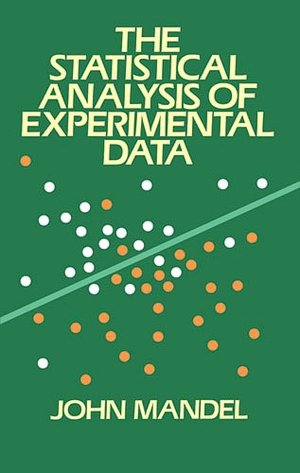The Statistical Analysis of Experimental Data pdf
Par pate stephen le mercredi, juillet 15 2015, 01:52 - Lien permanent
The Statistical Analysis of Experimental Data by John Mandel, Mandel


Download eBook
The Statistical Analysis of Experimental Data John Mandel, Mandel ebook
Page: 432
ISBN: 9780486646664
Publisher: Dover Publications
Format: pdf
The Statistical Analysis of Experimental Data. Researchers in this field urgently need educating in the perils of post hoc interpretation of fit the assumptions of statistical models (balanced design, no missing values, homoskedasticity) we should focus on design of ecologically valid experiments then go back to statistician and ask for tools that allow us to model the data we obtained. Moreover, our experimental results show that the study of complex diseases through pathway analysis is able to highlight genes weakly connected to the phenotype which may be difficult to detect by using classical univariate statistics. We use Design of Experiments (DOE) to derive a minimal set of test points that covers the full range of input conditions. The data from BaBar, a high-energy physics experiment based at the U.S. While there a number of forms of statistical analysis, the two dominant forms are Frequentist and Bayesian. NIH/OLAW had no role in study design, data collection and analysis, or preparation of the manuscript. (Phys.org) -- Recently analyzed data from the BaBar experiment may suggest possible flaws in the Standard Model of particle physics, the reigning description of how the universe works on subatomic scales. In statistical analysis, sigma indicates the level of probability of a data set being due to chance. The problem is not just with the statistics, but with the use of statistics for what are, in effect, unconstrained exploratory analyses. The.Statistical.Analysis.of.Experimental.Data.pdf. At 3.4 sigma there is less than a 0.1% chance of being a false signal. This role is responsible for the statistical analysis of data generated by the organization, LAN TD, ensuring data quality, reliability of the databases and supporting the organization in the analysis for knowledge transfer.